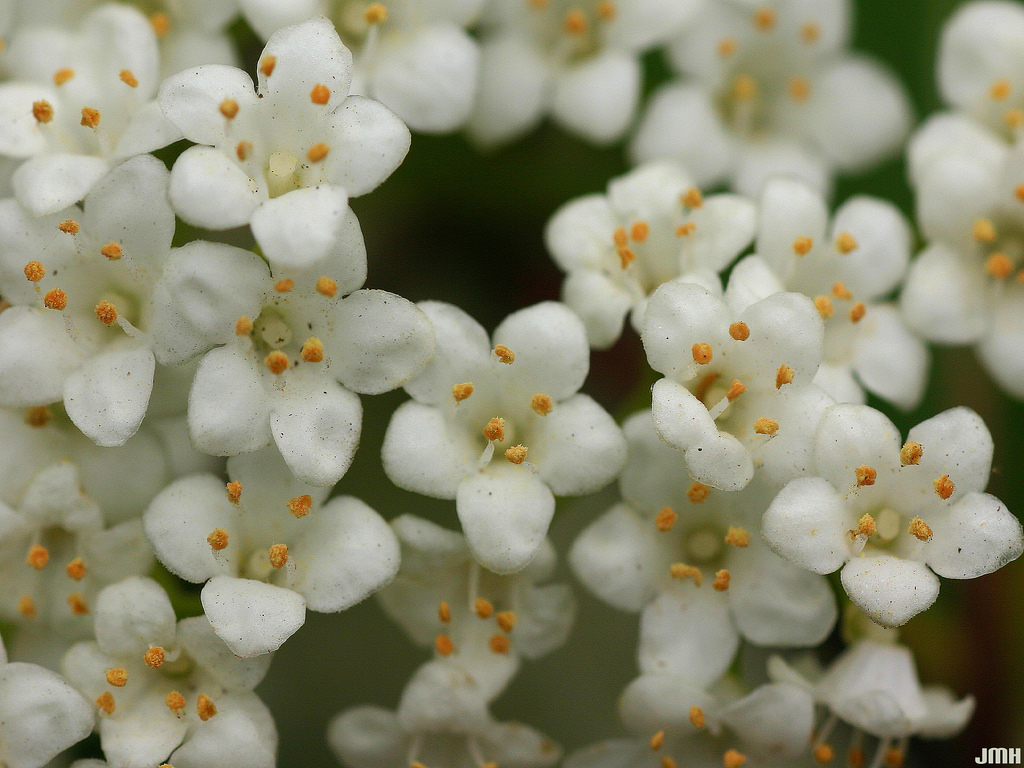Black Haw: Jam or Vaginal-Tonic, Anyone?
This image was retrieved under public domain licensure from here.
A Serious Note of Caution:
You don’t need to be an expert on all wild plants to start foraging your food and "medicine;" you only need to be an expert on the plant you are going to use or consume. You’ve got one job: be certain. Any doubt is a warning to yourself… listen. A great way to familiarize yourself with a plant like this one is to purchase seeds/live plants from a reputable vendor and plant them at home.
This site will never be a source of medical advice.
Viburnum prunifolium L.
Synonyms — Viburnum ferrugineum; Viburnum prunifolium var. bushii.
Family — Adoxaceae (Muskroot Family)
Family Characteristics — N/A
Aliases — American sloe, nannyberry, nanny bush, wild raisin, black haw, stagbush, stagbush sloe, haw, sweet haw, sloe, sheepberry, sloe-leaved viburnum.
Binomial Etymology— Viburnum is a Latin term meaning "the wayfaring tree;" prun- from Latin, signifies the "plum," and -folium (Latin) signifies "the leaf" [2]. So, we can say that the binomial loosely means "the wayfaring tree with plum-like leaves."
Binomial Pronunciation: — vi-BER-num pru-ni-FO-li-um
USDA Native Status — Native in the lower 48
Introduction
A New World shrub that was briefly considered as a commercial fruit crop [3], Black Haw was studied widely as a gynecological aid (primarily for treating dysmenorrhoea or painful mensuration) and as a means to prevent miscarriages in the late 19th century [5] [8]. Viburnum prunifolium was used among Native Americans for fresh berries, to make jam, reduce muscle spasms, induce sweating, and fight fevers/smallpox/flu in addition to its use as a gynecological aid[6].
V. prunifolium's reputation as an miscarriage preventative medicine was so great that rumors once stirred that the Virgin Mary Herself carried the plant with Her [9]. Looking at the record as a whole, the opinions on the efficacy of black haw's use as a drug from the perspective of the 19th century medical community seems to be somewhat split. Physicians of the time either gave highly positive reports in support of its medical bioactivity, or flippantly wrote off the plant as being completely inert as a medical drug.
Divisions aside, black haw was first listed on the official United States Pharmacopeia roster in 1880; today, it is listed on the Food and Drug Administration's coveted GRAS list (Generally Recognized As Safe) [13]. That of course doesn't mean everything.
Please consult a physician if you are suffering from any of the complaints listed below; this site is not a source of medical advice.
"Welcome to the vagina-pampering and sweet berry-producing world of black haw!"
Your Future Baby
Description
V. prunifolium is a relatively short the reaches a height of 12-15 foot high. The leaves are elliptical (mostly oval with slight-to-no point) to ovate (egg shaped with the wide end attached to the petiole). The mature leave margins (edges) are very finely serrated.
Image retrieved under Creative Commons licensure from here.
Habitat
Black haw is considered an understory shrub that will grow in zones 3 through 9 [14]. It is found in floodplains, damp woodlands [15], and wood edges [16].
Image retrieved from the USDA website at this LINK.
Culinary Uses
The MESKWAKI ate the berries raw or cooked into a jam [6].
Folk Remedies
In the early 20th century, wild Viburnum prunifolium bark was collected as a commercial product —selling at about 1-2$/pound — in the fall for use in preparing tonics that were primarily used to calm the nerves, and reduce involuntary muscle spasms [1].
Ethnobotany
EUROPEAN AMERICANS knew V. prunifolium as a calming tonic, astringent, diuretic, abortion preventative, and "uterine sedative" [4].
AFRICAN AMERICANS were reported to have discovered its use as an abortion preventative by either eating the berries or making an infusion with the bark [5].
NATIVE AMERICANS:
The CHEROKEE used black haw to reduce muscles spasms (infusion), to induce sweating (root bark eaten), fever reduction in cases of smallpox and flu (compound infusion), sore tongue (infusion wash), and general tonic (bark infusion) [6]. The DELAWARE used the root bark along with bloodroot, pearly everlasting, wild plum, stone root, and bayberry leaves to create a tonic used as a strengthening gynecological tonic [7]. The MICMAC used the bark to make tea for women just before and during childbirth [9].
This images was retrieved under public domain licensure from here.
Pharmaceutical effects
The bioactive chemical constituents found in stem and root bark of V. prunifolium: iridoid glycosides, coumarins (scopoletin and aesculetin), and triterpenes (oleanolic and ursolic acids) [11]. The most bioactive metabolites found in black haw have been shown to be iridoid compounds related to spasmolytic and tissue relaxant effects [17].
There is comparatively little contemporary research on the medicinal effects of V. prunifolium than what I typically find.
History
As previously stated, black haw is primarily known for its impacts as an abortion preventative. There have been claims in the literature stating enslaved AFRICAN AMERICANS working on the plantations brought this action to light [5]. Still, other sources claimed that plantation owners would force pregnant slaves to drink black haw root tea daily [12]. This was reportedly done when it was believed the slave was trying to induce an abortion by consuming a known abortifacient [12].
Pull Up Your Plants! (PUYP) is now receiving visits from all over the world. Please take the time to leave a comment or subscribe below. I’d like to hear about your experiences with black haw.
For source citations, please email Kevin Healey at
pullupyourplants. @ gmail.com
With Love,
Kevin.







